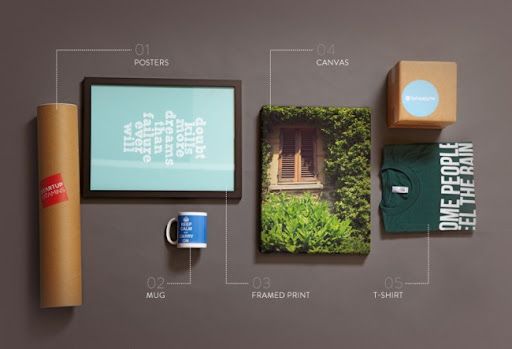Hello!
The primary goal of branding is to convey a clear and consistent message about your company and products. Additionally, entwined in this objective is the need to tell a story that customers can relate to.
You have to achieve both to establish better connections and build loyalty with people.
If you want to fulfill these two goals, you have to leverage all available marketing materials. These include both traditional and digital tools.
Your Website as a Branding Tool
With more consumers using the Internet to search for products before purchasing them, maximizing the use and potential of your website for branding purposes is important now more than ever.
Establishing your visual brand guidelines and making sure they are incorporated into your website is a great way to start using your site as a branding tool.

Your visual brand guideline contains your standards and rules regarding your official color palette, typography, logo design, and brand tone. To have a website that is cohesive and conveys the right message, you need to follow these established standards.
This guideline also ensures your website’s design and content are consistent with your other marketing materials and tools.
Aside from incorporating your visual brand guide in your website, here are five more ways to improve your website branding:
1. Share your story.
Although you want to focus on the visual elements, content about your products, and navigational tools on your website to give visitors a great user experience, don’t forget to use your site to tell your story.
Your About or About Us page is the perfect place to enable visitors to know you, your team, and your company.
 To give potential customers the chance to know the real you, inject your unique identity into this page.
To give potential customers the chance to know the real you, inject your unique identity into this page.
Doing so makes it easier for visitors to relate with you, which can drive them to engage with you.
Also, share your values and story on the other parts of your website. You can do this by posting photos and feedback or testimonials from your satisfied customers.
However, make sure you are consistent so that the visitors will have a clear picture of what your brand is about and what your goal is. This will go a long way in getting their trust.
2. Be clear with your main goal.
 When visitors open your website, they should know exactly what you’re offering and how it will benefit them.
When visitors open your website, they should know exactly what you’re offering and how it will benefit them.
Because of this, you need to be clear about your main objective. This could be having a visitor purchase a product, request an appointment, or submit a contact form.
Whatever you want the visitors to ultimately do on your website, guide them towards taking this specific action.
Make sure your website branding is consistent with this goal as well.
3. Select the colors to use on your website.
Although your visual brand guidelines have specific rules on which colors you can use on your website, it doesn’t mean you should limit your options to them.
Colors play a crucial role in marketing and selling products. As such, you can incorporate other hues on your website to turn it into a more effective branding tool.
However, before you pick any colors randomly, consider your brand identity and values first. Next, translate them to basic emotions, such as trustworthiness, energy, or optimism.
 With these emotions in mind, choose the right colors that represent and evoke them. For instance, if you want to be known as a trustworthy brand, add touches of blue to your website.
With these emotions in mind, choose the right colors that represent and evoke them. For instance, if you want to be known as a trustworthy brand, add touches of blue to your website.
If you want to be known for your energy and enthusiasm, opt for hues of red. On the other hand, yellow represents optimism and happiness.
When the right colors are incorporated correctly, your website branding can bring your visitors into the particular mindset you want your website to instill subtly.
4. Ensure all style and visual elements are consistent.
Your logo is a crucial part of your brand identity. It is a powerful branding tool and functions as a visual representation of your label.
 Therefore, displaying your logo prominently on your site in strategic areas, such as in your header and footer, favicon, and contact forms, allows your customers to recognize and identify with your label.
Therefore, displaying your logo prominently on your site in strategic areas, such as in your header and footer, favicon, and contact forms, allows your customers to recognize and identify with your label.
However, you have to be consistent with displaying your logo on your website. This means deciding on a size and format and sticking to it. Doing so will help you avoid confusing your visitors.
Additionally, ensure the other visual elements of your site are consistent and cohesive. These include fonts, colors, and themes.
Fonts, in particular, can give your brand credibility and convey your persona, as long as they are consistent with your visual branding guideline.
5. Create a cohesive content strategy.
Content is still king. It helps your website become more visible online and increases traffic to your site.
Also, your website needs to have informative, engaging, and fresh content to keep visitors interested and encourage them to come back.
 Because of this, you have to focus on creating excellent content that can help improve your website branding.
Because of this, you have to focus on creating excellent content that can help improve your website branding.
However, this doesn’t mean posting just any content that strikes your fancy since this can turn off your website visitors, which will affect how they view your brand.
To have content that enhances your website branding, create a strategy that focuses on having articles, videos, and other pieces with themes that resonate with your brand identity.
Doing so enables you to give readers value when they visit your site and reinforce your branding at the same time.
Conclusion
Your website can be more than your digital storefront. It can tell people about your story and your goals for starting your company.
If you want to boost your website branding significantly and, at the same time, help your site stand out from the competition, follow these tips.
- 6 Technologies To Improve Your Branding
- How to Boost Your Brand Reputation if You Are a Small Business?
- Brand Marketing and Performance Marketing in a Nutshell
- Why Metaverse is Rising: Crypto, NFT, and Big Brands
- 7 Tips for Protecting Your Brand Against Cyberattacks
- 7 Effective Tactics For Humanizing Your Brand (With Examples)
- 5 Ways to Increase Brand Awareness Using NFTs
- How to Successfully Rebrand Your Business
- 5 Best Online Tools to Create a Logo in Minutes
- Tips for Choosing the Right Color Palette for Your Print Ad Designs
AUTHOR BIO
Stuart Harris is the Creative Director at Yellow, a Dubai branding agency, digital partner and advertising company working with progressive businesses to build bold, meaningful brands.






